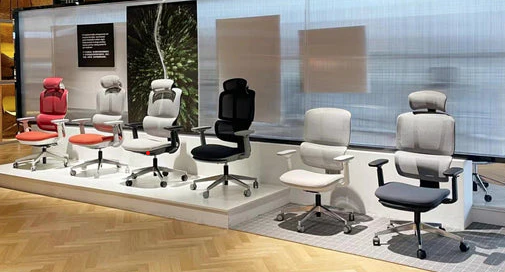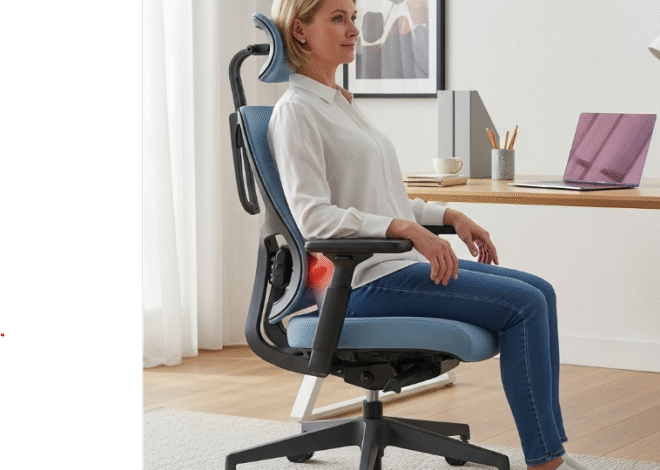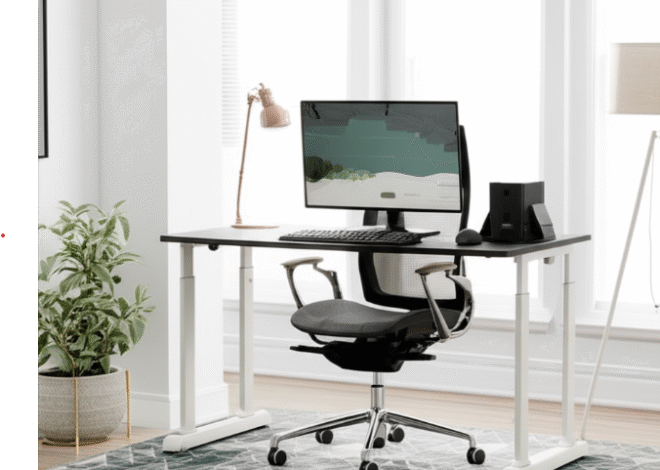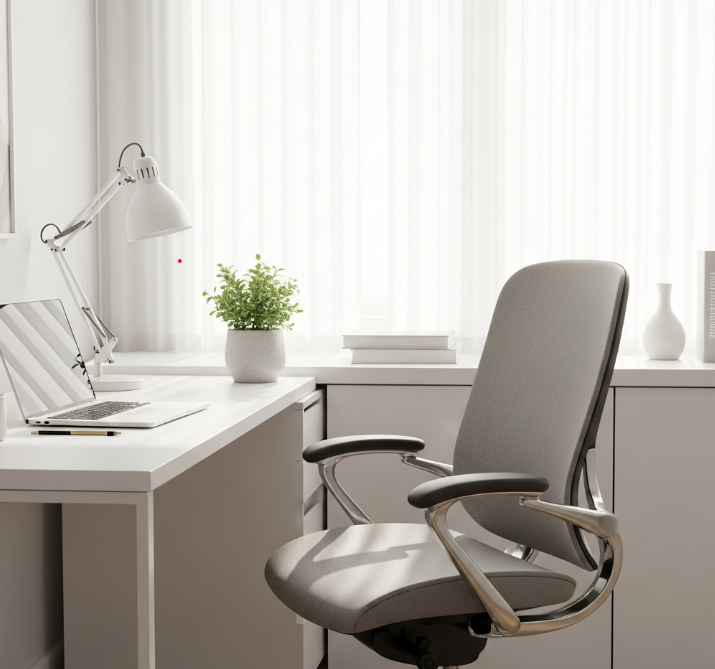
How to Find the Best Office Chair for Ultimate Comfort & Productivity
👑 Upgrade Your Workspace: How to Find the Best Office Chair for Ultimate Comfort & Productivity 🚀
Do you spend countless hours glued to your computer screen? 💻 Or perhaps you’re setting up a new remote work station and are on the hunt for the best office chair? An excellent office chair isn’t just another piece of furniture; it’s a vital investment in your health, productivity, and overall well-being. A poor chair can lead to back pain, neck stiffness, and fatigue, significantly impacting your work performance and daily life.
In this comprehensive guide, we’ll delve into what makes an ideal office chair, compare different types, and help you pinpoint the best office chair tailored to your unique needs. Let’s get started! 👇
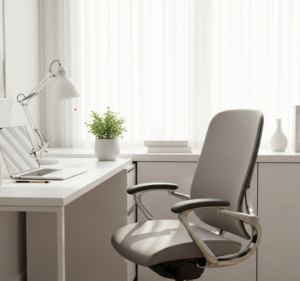
🧐 Why Is Investing in the Best Office Chair So Crucial?
Investing in a high-quality office chair is a wise decision with numerous benefits:
- Improved Posture & Back Pain Relief: 🧘♀️ An ergonomic chair supports the natural curvature of your spine, alleviating discomfort caused by poor posture. This is paramount in preventing and reducing back pain.
- Enhanced Productivity: 📈 When you’re comfortable, you can focus better, minimizing distractions. This directly boosts your work efficiency and output.
- Reduced Fatigue & Increased Stamina: Tiredness can creep in quickly with an uncomfortable chair. A supportive chair helps you maintain energy levels throughout the day, allowing you to work longer and more comfortably.
- Better Blood Circulation: 🩸 Proper chair design promotes healthy blood flow, preventing issues like numb legs or swollen ankles often associated with prolonged sitting.
- Long-Term Health Benefits: Regular use of an unsuitable chair can lead to chronic musculoskeletal problems. A good chair is a preventative measure for long-term health.
- Professional Appearance: ✨ A well-chosen office chair can also contribute to the aesthetic appeal of your workspace, making it look more professional and inviting.
🛠️ Key Features to Look for in the Best Office Chair
When searching for the best office chair, you’ll encounter a plethora of features. Here are the most critical ones to prioritize:
1. Ergonomic Adjustability 🔄
This is the cornerstone of any great office chair. The more adjustable parts, the better you can customize it to your body. Look for:
- Seat Height Adjustment: ⬆️⬇️ Essential for ensuring your feet are flat on the floor (or on a footrest) and your knees are at a 90-degree angle.
- Seat Depth Adjustment: 📏 Allows you to adjust the seat forward or backward so that there’s a 2-4 inch gap between the edge of the seat and the back of your knees. This prevents pressure on your circulation.
- Lumbar Support: 🧘♀️ This is crucial for supporting the natural inward curve of your lower back. The best office chairs offer adjustable lumbar support (height and depth) to perfectly fit your unique spine.
- Armrest Adjustment: ↕️↔️ Armrests should be adjustable in height (up/down), depth (forward/backward), and pivot (in/out). This helps reduce strain on your shoulders and wrists.
- Backrest Recline & Tension: ↩️ Reclining allows you to shift your posture, reducing pressure on your spine. Tension control lets you adjust the force required to recline, making it comfortable for your body weight.
- Tilt Lock: 🔒 This feature allows you to lock the chair’s recline at a specific angle.
- Headrest/Neck Support: 💆♀️ While not strictly necessary for all, a good headrest can provide excellent neck support, especially during reclined positions or for taller individuals. It should be adjustable in height and angle.
2. Material & Upholstery 🧵
The material affects comfort, durability, and breathability:
- Mesh: 🌬️ Excellent for breathability, preventing sweat buildup. Often seen in modern ergonomic chairs. Can be less durable than fabric over time.
- Fabric: 🧶 Soft, comfortable, and offers good breathability. Wide range of colors and textures. Generally durable.
- Leather: 🐄 Luxurious and aesthetically pleasing. Durable and easy to clean, but can be less breathable, leading to sweat. Genuine leather is expensive; PU leather (synthetic) is a more affordable alternative but less durable.
- Padded/Foam: ☁️ Offers good cushioning. Look for high-density foam that retains its shape over time, rather than cheap foam that flattens quickly.
3. Build Quality & Durability 💪
A good office chair is an investment, so you want it to last.
- Frame Material: Look for strong materials like steel, aluminum, or high-quality reinforced nylon.
- Casters (Wheels): ⚙️ High-quality casters glide smoothly and won’t scratch your floor. Consider rubberized casters for hard floors and plastic casters for carpets.
- Weight Capacity: Check the chair’s maximum weight capacity to ensure it safely supports you.
- Warranty: A good warranty (5-10 years or more) signals confidence from the manufacturer in their product’s durability.
4. Base Stability vững chắc
A five-point star base is standard and provides excellent stability. Ensure it’s made of a robust material like metal.
🛋️ Types of Office Chairs: Which One is the Best Fit for You?
The market is flooded with different types of office chairs, each designed for specific needs. Understanding these will help you choose the best office chair for your situation.
1. Ergonomic Office Chairs 🧘♂️ (Our Top Recommendation!)
- What they are: These chairs are designed with human anatomy in mind, offering extensive adjustability and support for prolonged sitting. They are the go-to choice for anyone spending long hours at a desk.
- Pros: Maximum adjustability, superior lumbar and back support, promotes good posture, reduces health risks.
- Cons: Often more expensive than basic chairs.
- Best for: Anyone working long hours, people with back pain, those prioritizing health and comfort.
2. Executive Chairs 🤵
- What they are: Typically large, luxurious chairs often made of leather or high-quality fabric, with high backs and ample padding. They project an image of authority.
- Pros: Comfortable padding, luxurious look, often good for reclining.
- Cons: Less ergonomic adjustability compared to dedicated ergonomic chairs, can be expensive, may lack proper lumbar support.
- Best for: Occasional use, aesthetic appeal in an executive office, short meetings. Not ideal for 8+ hours of daily work if ergonomics are a priority.
3. Gaming Chairs 🎮
- What they are: Inspired by racing car seats, these chairs often feature aggressive styling, winged backs, and sometimes integrated speakers or vibration functions.
- Pros: Bold aesthetics, often good recline, can be comfortable for short gaming sessions.
- Cons: Many are not truly ergonomic, lacking proper lumbar and neck support. The bucket seat design can restrict movement. Marketing often oversells their ergonomic benefits.
- Best for: Dedicated gamers who prioritize style, and sometimes those who enjoy the deep recline for cinematic experiences. Caution for long-term daily use if not specifically designed with strong ergonomic features.
4. Task Chairs 📝
- What they are: Basic office chairs, often compact and with limited adjustments. They are typically more affordable.
- Pros: Space-saving, budget-friendly.
- Cons: Limited adjustability, minimal ergonomic support, not suitable for long hours of sitting.
- Best for: Short-term use, reception areas, occasional desk work.
5. Kneeling Chairs 🦵
- What they are: Chairs designed to distribute your weight between your buttocks and shins, opening up the hip angle and encouraging a more upright posture.
- Pros: Can alleviate lower back pressure, encourages core engagement.
- Cons: Not for everyone, can put pressure on shins, may be uncomfortable for very long periods, less mobility.
- Best for: Short intervals, as an alternative to a traditional chair, or for specific back conditions (consult a doctor).
6. Balance/Active Sitting Chairs 🤸♀️
- What they are: Chairs like stability ball chairs or wobble stools that encourage slight movement and core engagement while sitting.
- Pros: Strengthens core muscles, improves balance, prevents static sitting.
- Cons: Can be tiring for long periods, may not offer back support.
- Best for: Supplementing a traditional chair, for those who like to fidget or move while working.
💡 Finding YOUR Best Office Chair: A Step-by-Step Guide
Choosing the best office chair isn’t a one-size-fits-all scenario. Here’s how to find the perfect match for you:
Step 1: Assess Your Needs & Usage 🎯
- How long do you sit daily? If it’s 6+ hours, an ergonomic chair is non-negotiable. For shorter periods, you might get away with fewer features.
- Do you have existing pain or health issues? If yes (e.g., chronic back pain, sciatica), prioritize chairs with advanced lumbar support, adjustability, and possibly consultation with a physical therapist.
- What’s your body type? Consider your height, weight, and build. Some chairs are designed for specific body types (e.g., big & tall chairs, petite chairs).
- What’s your budget? Set a realistic budget, but remember that a higher price often correlates with better quality, durability, and ergonomic features. Think of it as an investment in your health.
Step 2: Set Your Budget 💰
Office chairs range from under $100 to over $1,500. While cheap chairs might seem appealing, they often lack the adjustability, support, and durability needed for long-term use.
- Budget-Friendly ($100-$300): You can find decent task chairs or basic ergonomic chairs, but compromises on adjustability or material quality might be necessary.
- Mid-Range ($300-$700): This sweet spot offers a good balance of ergonomic features, quality materials, and comfort. Many excellent options fall into this category.
- High-End ($700+): These are premium ergonomic chairs (like Herman Miller, Steelcase) offering unparalleled adjustability, superior materials, and long warranties. They are built to last decades.
Step 3: Prioritize Key Ergonomic Adjustments ⚙️
Based on your needs, decide which adjustments are non-negotiable. Lumbar support, seat height, and armrest adjustments are usually paramount.
Step 4: Consider Materials & Aesthetics ✨
Choose materials that suit your climate, comfort preference, and office décor. Breathable mesh is great for warmer environments, while leather offers a premium feel.
Step 5: Read Reviews & Compare Models 💬
- Look for credible reviews: Websites like Wirecutter, RTINGS, and reputable tech/office blogs often have in-depth reviews.
- Focus on user experiences: Pay attention to what users say about comfort, durability, and specific features after prolonged use.
- Compare specifications: Create a spreadsheet if needed to compare features, dimensions, weight capacity, and warranty across different models.
Step 6: Test Drive if Possible! 🧑🔬
If you have the opportunity, visit a furniture store to sit in various chairs. This is the best way to gauge comfort and fit. Pay attention to:
- How does the lumbar support feel?
- Are your feet flat on the floor?
- Do the armrests adjust to a comfortable height?
- Does the seat provide enough cushioning without being too soft?
- Can you easily adjust all the features while seated?
Step 7: Check the Warranty & Return Policy 📦
A good warranty is a testament to the chair’s quality. Also, ensure there’s a reasonable return policy in case the chair doesn’t meet your expectations once you’ve used it for a few days.
🏆 Top Contenders for the Best Office Chair (Examples)
While “best” is subjective, certain brands and models consistently rank high due to their superior ergonomics, build quality, and user satisfaction.
1. Herman Miller Aeron 🌟 (The Gold Standard)
- Why it’s great: Often considered the pinnacle of ergonomic chairs. Revolutionary design, unparalleled adjustability (PostureFit SL lumbar support), excellent breathability with Pellicle mesh, and incredibly durable.
- Best for: Those who want the absolute best and are willing to invest. People with chronic back issues.
- Considerations: Very expensive, might be overkill for casual users.
2. Steelcase Leap 🚀
- Why it’s great: Highly adaptable with “LiveBack” technology that flexes to support your spine as you move. Offers extensive adjustability and excellent comfort.
- Best for: Individuals who move a lot while sitting, those seeking premium ergonomics with a slightly different feel than Aeron.
- Considerations: High price point, but a worthy investment.
3. Branch Ergonomic Chair 🌱 (Great Mid-Range Option)
- Why it’s great: Offers a fantastic balance of ergonomic features, quality materials, and affordability. Great lumbar support, adjustable arms, and a sleek design.
- Best for: Budget-conscious buyers who still want genuine ergonomic benefits for long hours.
- Considerations: Not as many ultra-fine adjustments as premium chairs, but excellent for its price.
4. Secretlab TITAN Evo Lite / EVO 2022 Series 🎮 (Top Gaming/Ergonomic Hybrid)
- Why it’s great: While primarily marketed to gamers, Secretlab chairs offer significantly better ergonomics than many typical “gaming” chairs. They come with integrated adjustable lumbar support and magnetic memory foam head pillows.
- Best for: Gamers who also need ergonomic support for long sessions, or those who prefer the racing-style aesthetic with better comfort.
- Considerations: Still has a gaming aesthetic, might not suit all office environments. Heavier than some office chairs.
5. Sihoo M57 / M90D (Budget Ergonomic) 💰
- Why it’s great: Offers a surprising amount of ergonomic adjustability for its price point, including adjustable lumbar support, headrest, and armrests. Good value.
- Best for: Students, home office users on a strict budget, or those starting out with ergonomic chairs.
- Considerations: Build quality might not match premium brands, cushioning might be less durable over many years.
🧑💻 Ergonomics 101: How to Set Up Your Best Office Chair & Workspace
Having the best office chair is only half the battle. Proper setup of your entire workstation is crucial for maximizing comfort and preventing strain.
- Chair Height: Adjust your chair so your feet are flat on the floor (or a footrest), and your knees are at approximately a 90-degree angle. Your forearms should be roughly parallel to the floor when typing.
- Monitor Height: The top of your monitor screen should be at or slightly below eye level. This prevents neck strain.
- Keyboard & Mouse Placement: Keep your keyboard and mouse close to your body to avoid reaching, which can strain your shoulders and wrists. Your wrists should be straight, not bent up or down.
- Lumbar Support: Adjust the lumbar support to fit snugly into the natural curve of your lower back.
- Armrests: Adjust armrests so your arms gently rest on them without shrugging your shoulders. They should support your arms without hindering movement.
- Take Breaks! 🚶♀️ Even with the best chair, prolonged sitting is unhealthy. Stand up, stretch, and walk around every 30-60 minutes. Consider a standing desk as an alternative for part of your day.
- Lighting: Ensure your workspace is well-lit to prevent eye strain. Avoid glare on your screen.
❓ FAQs About Finding the Best Office Chair
Here are some frequently asked questions about choosing the best office chair:
Q1: How much should I spend on the best office chair?
A: It depends on your usage. For full-time work (6-8+ hours/day), aim for at least $300-$700. For occasional use, $150-$300 might suffice. Remember, it’s an investment in your health.
Q2: Is a gaming chair good for office work?
A: Generally, no. Most gaming chairs prioritize aesthetics over true ergonomics. While some (like Secretlab) are better, a dedicated ergonomic office chair is usually superior for posture and long-term comfort during work.
Q3: What’s the difference between a high-back and mid-back office chair?
A: A high-back chair supports your entire back, including your upper back and shoulders, and often includes a headrest. A mid-back chair typically only supports your mid-to-lower back. For prolonged sitting, a high-back with headrest support is often preferred.
Q4: My current chair is uncomfortable. Can I just buy a cushion?
A: A cushion can offer temporary relief but won’t correct fundamental ergonomic flaws of a poor chair. It’s a band-aid solution. Investing in a proper ergonomic chair is the real fix.
Q5: How long do office chairs last?
A: It varies greatly by quality. A cheap chair might last 1-3 years. A good mid-range ergonomic chair can last 5-10 years. Premium ergonomic chairs from brands like Herman Miller or Steelcase are often designed to last 10-15+ years, often backed by long warranties.
Q6: Should I get a chair with wheels or fixed legs?
A: For most office environments, wheels (casters) are essential for mobility. Fixed legs are suitable for conference rooms or guest chairs where movement isn’t required.
🏁 Conclusion: Sit Smarter, Work Better with the Best Office Chair
Choosing the best office chair is a critical decision that directly impacts your comfort, health, and productivity. Don’t view it as an expense, but rather as an investment in yourself. By understanding key ergonomic features, knowing the different types of chairs, and taking the time to assess your personal needs, you can find the perfect seating solution that supports you through countless hours of work.
Remember, your body will thank you for it! So go ahead, explore the options, and elevate your workspace with the best office chair that empowers you to work smarter, not harder. Happy sitting! 🚀✨
